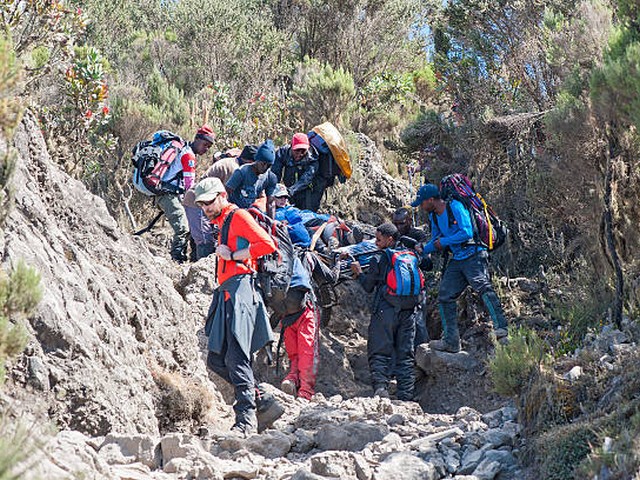How To Film Your Kilimanjaro Adventure: A Guide by Kilimanjaro Centre for Trekking and Ecotourism (KCTE)
Embarking on an adventure to climb Mount Kilimanjaro is a once-in-a-lifetime experience. It’s not just about reaching the summit; it’s about every laugh, every challenge, and every breathtaking view along the way. At Kilimanjaro Centre for Trekking and Ecotourism (KCTE), we understand the value of these moments. That’s why we’re excited to guide you on how to capture and immortalize your journey up Africa’s highest peak. Whether you’re a novice filmmaker or an avid vlogger, this post will help you film your Kilimanjaro adventure in a way that’s as epic as the climb itself.
Why Film Your Kilimanjaro Climb?
Filming your Kilimanjaro climb offers more than just memories; it’s a way to share your story, inspire others, and maybe even re-live your amazing journey from the comfort of your home. Videos can capture the essence of your emotions and the majestic landscapes in a way photographs alone cannot.
Preparing to Film: Equipment Essentials
Choosing the Right Camera Gear
When selecting equipment for filming on Kilimanjaro, consider weight, durability, and functionality. Here’s what you’ll typically need:
- A Durable Camera: Mirrorless cameras are great for a balance of quality and portability. Brands like Sony, Canon, and Nikon offer weather-sealed models that stand up to the elements.
- Action Cameras: Devices like GoPro are perfect for hands-free filming and action shots. They are small, robust, and have good battery life.
- Smartphones with High-Quality Cameras: For many, smartphones are a convenient choice. Ensure your phone has a good camera and consider waterproof cases for added protection.
- Tripods and Stabilizers: Bring a lightweight tripod or a gimbal stabilizer to avoid shaky footage.
- Extra Batteries and Memory Cards: Cold temperatures on the mountain can drain batteries quickly. Pack extras and keep them warm in your pockets.
- Solar Chargers: Keep your equipment charged with portable solar panels.
Understanding Kilimanjaro’s Environment
Mount Kilimanjaro’s varying climates—from tropical rainforests to arctic summits—pose unique challenges for filming. Preparation for these conditions is crucial. Waterproof and dustproof equipment or cases are highly recommended.
Capturing the Journey: Filming Techniques and Tips
Plan Your Shots
Think about the story you want to tell. Capture everything from the bustling life at the base camps to the serene sunrises at the summit. Plan to record short clips of varying lengths and angles to maintain interest.
Use the Rule of Thirds
This fundamental principle of composition involves dividing the shot into nine equal segments. Placing the subject along these lines or their intersections creates more tension, energy, and interest in the composition than simply centering the subject.
Timelapse and Slow Motion
Utilize your camera’s timelapse feature to showcase cloud movements or the bustling activity at camp. Slow motion can be great for dramatizing movement, such as crossing rough terrains or the emotional moment of reaching the summit.
Capture the Sounds
The sounds of Kilimanjaro are as important as the sights. Record the winds, wildlife, and even snippets of conversation. These sounds will add a powerful layer of authenticity to your footage.
Respect the Mountain and Fellow Climbers
Always be considerate of your environment and the people around you. Seek permission before filming individuals and be mindful not to disrupt others’ experiences.
Protecting Your Gear and Your Experience
Keeping Equipment Safe
Secure your gear against falls or bumps with cushioned bags. Keep electronic devices in sealed bags to prevent moisture damage during rain or snow.
Balance Filming with Being Present
While it’s important to capture memories, remember to also put the camera away sometimes and absorb the beauty of Kilimanjaro with your own eyes.
Editing Your Adventure Film
Crafting the Story
Post-climb, use editing software to piece your story together. Add music and use cuts that align with the pace of the music, keeping viewer engagement high.
Highlight Personal Moments
Don’t shy away from including personal commentary or feelings during the climb. These moments can often be the most relatable and compelling parts of your video.
Share Your Journey
Once your video is ready, share it on social platforms, with friends, or consider submitting it to travel and adventure film festivals.
FAQs
What is the best time of year to film on Kilimanjaro?
The best times are during the dry seasons, from late June to October and from late December to early March.
How do I handle filming in cold and high-altitude conditions?
Keep batteries warm by storing them close to your body and reduce filming time in extremely cold conditions to protect your equipment and your hands.
Can I hire a professional filmmaker from KCTE?
Yes, KCTE offers professional filming services. Our experts are equipped and experienced in capturing high-altitude treks.
Conclusion
Filming your Kilimanjaro adventure is an exciting way to preserve and share your journey. With the right preparation and respect for the mountain, you can create a stunning and memorable record of your climb. Ready to embark on this thrilling adventure and tell your own Kilimanjaro story? Book your climb with Kilimanjaro Centre for Trekking and Ecotourism (KCTE) and ensure not just a safe ascent, but an impeccably captured adventure too!
Start planning today, and prepare to be inspired by every step you take towards the roof of Africa. Visit us at [KCTE Website] to learn more or to book your trip. Let’s make your Kilimanjaro adventure unforgettable — both in memory and on film!




